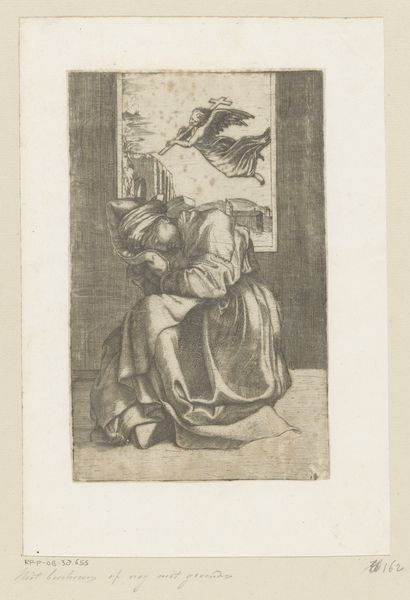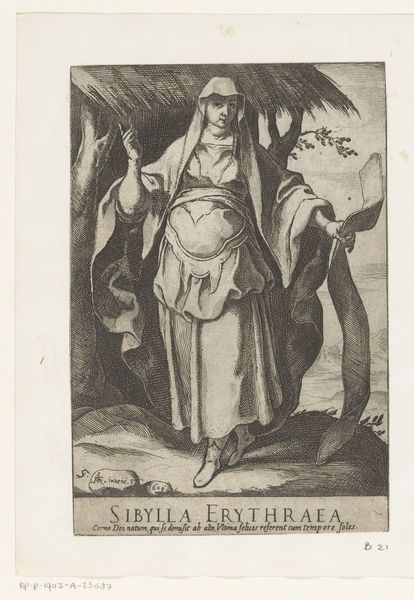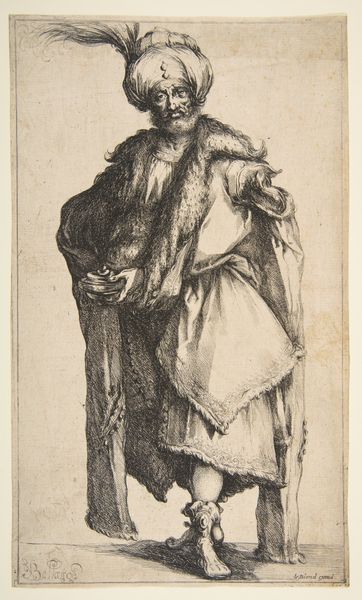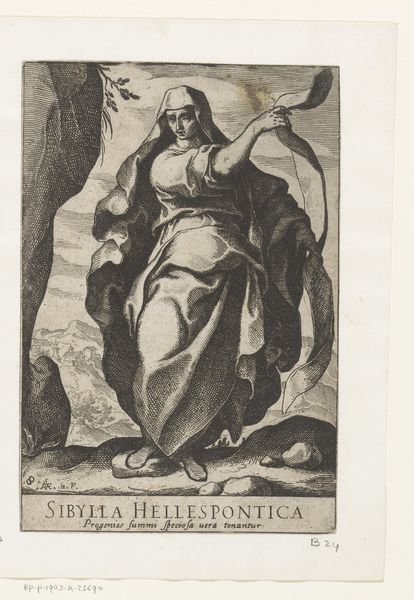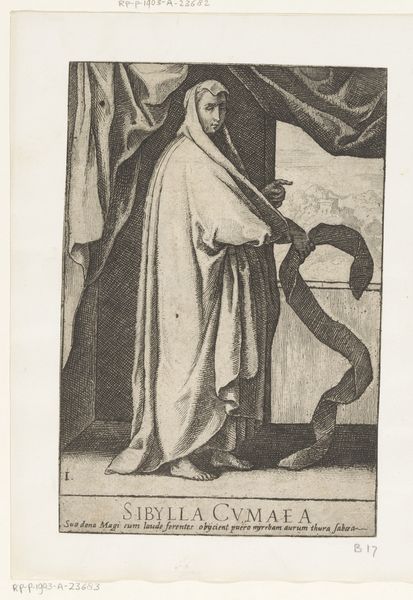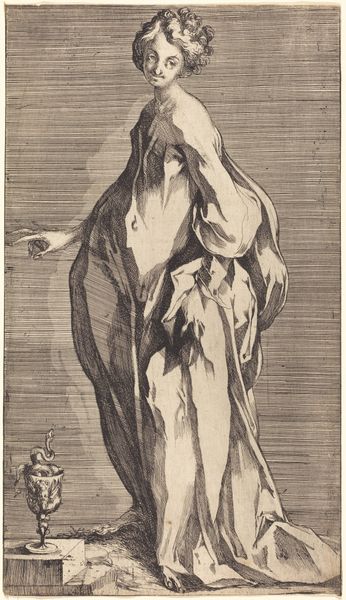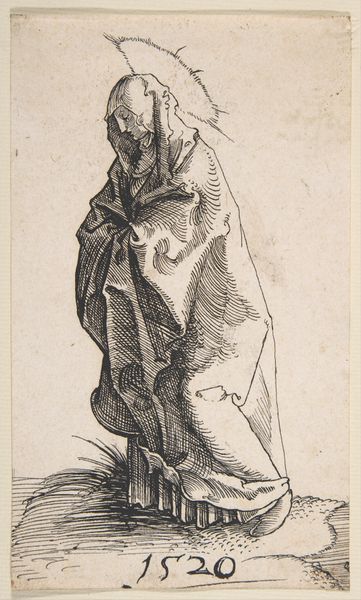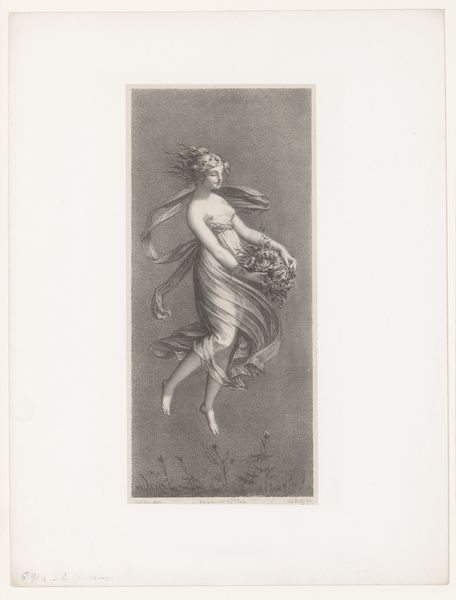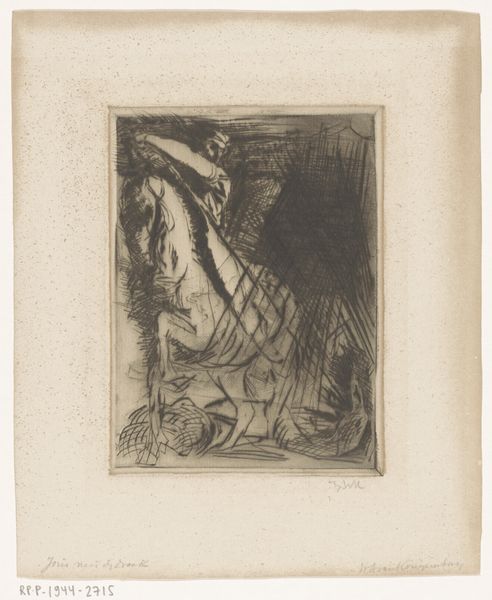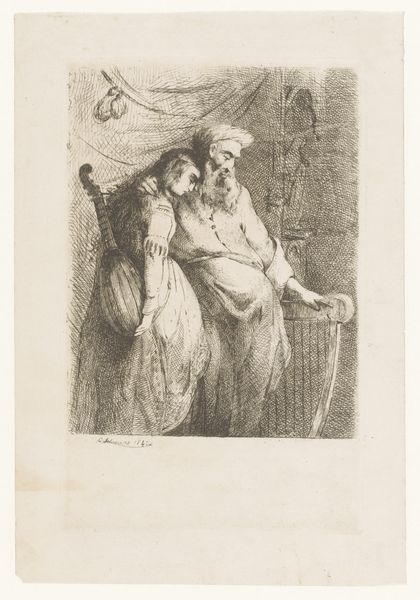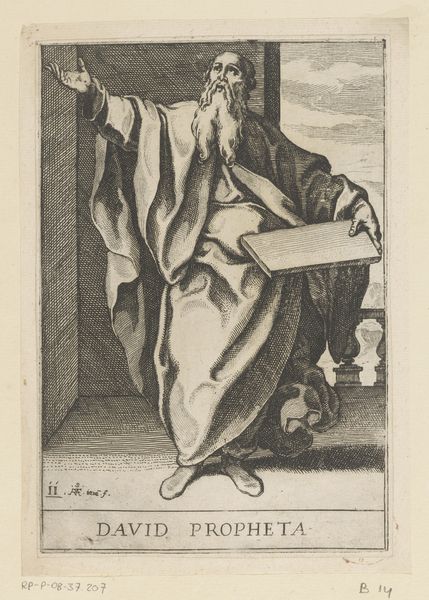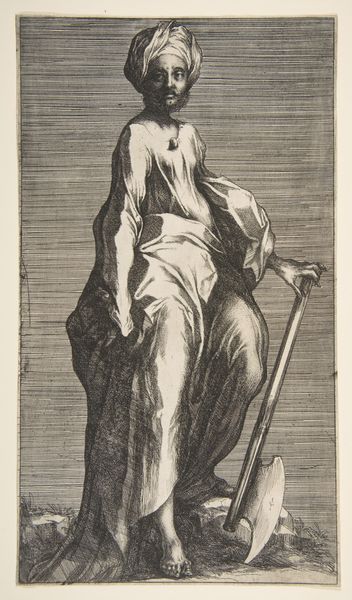
#
pencil drawn
#
toned paper
#
light pencil work
#
pencil sketch
#
old engraving style
#
caricature
#
personal sketchbook
#
pencil drawing
#
sketchbook drawing
#
pencil work
Dimensions: height 190 mm, width 130 mm
Copyright: Rijks Museum: Open Domain
Editor: So, this is "Libische Sibille" by Raffaello Schiaminossi, created around 1609. It's a pencil drawing on toned paper and is currently held at the Rijksmuseum. The old engraving style gives it this interesting aged appearance, but I am curious about how a materialist critic would interpret it? What elements stand out to you? Curator: Given its date and medium, what strikes me is the process of reproduction implicit in its very existence. Schiaminossi, an engraver, uses pencil, a relatively accessible medium, to create a design. For whom was this design created, and what role did it play in the material production of engravings at the time? Editor: Interesting, I didn’t really think about its place in production! You're saying this wasn’t necessarily intended as a standalone artwork? Curator: Exactly! We need to consider this drawing's function within the larger context of printmaking. The lines, the shading... they’re all geared towards translation into a print. How does that understanding change our perception of it as a 'drawing' in the traditional sense? Editor: So, the material limitations and the planned method of reproduction actually shaped the art we see in front of us? Curator: Precisely. The labor involved, the skill in translating three dimensions into reproducible two-dimensional lines, the eventual consumption of prints derived from this… all speak to the social and economic forces at play. Think about who would commission such a work, who would buy the prints, and what social narratives these images reinforced. The shift toward toned paper signals changing material needs and artistic value as well. Editor: I see, by examining the materials and considering the process, we can actually uncover hidden aspects of its cultural and historical context. Curator: Indeed. It’s not just about the figure itself, but the means and relations of production. Editor: I hadn't considered it that way before, but viewing the artwork as an artifact of the artist's labour and as a design deepens my understanding of its historical context. Thanks for sharing your perspective!
Comments
No comments
Be the first to comment and join the conversation on the ultimate creative platform.
